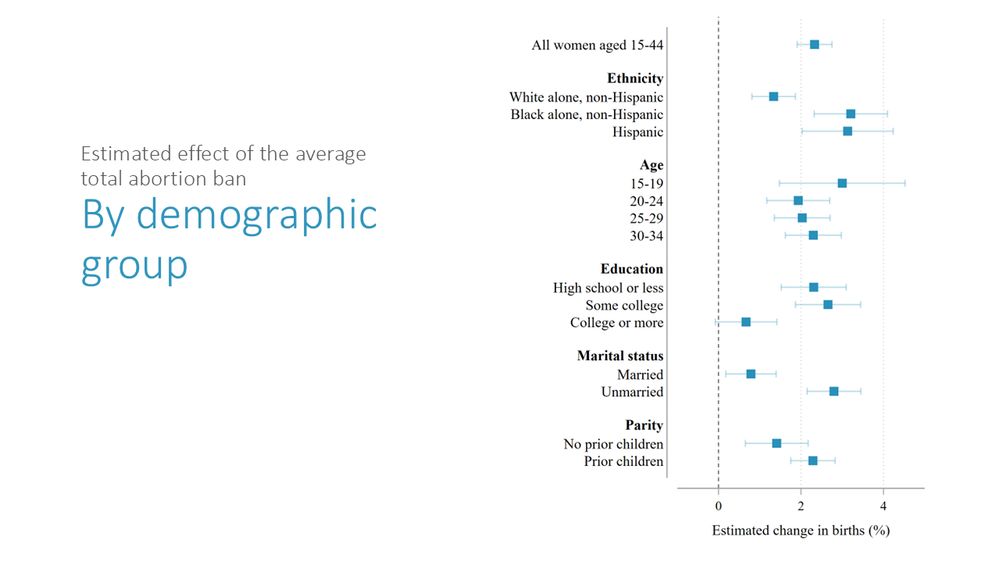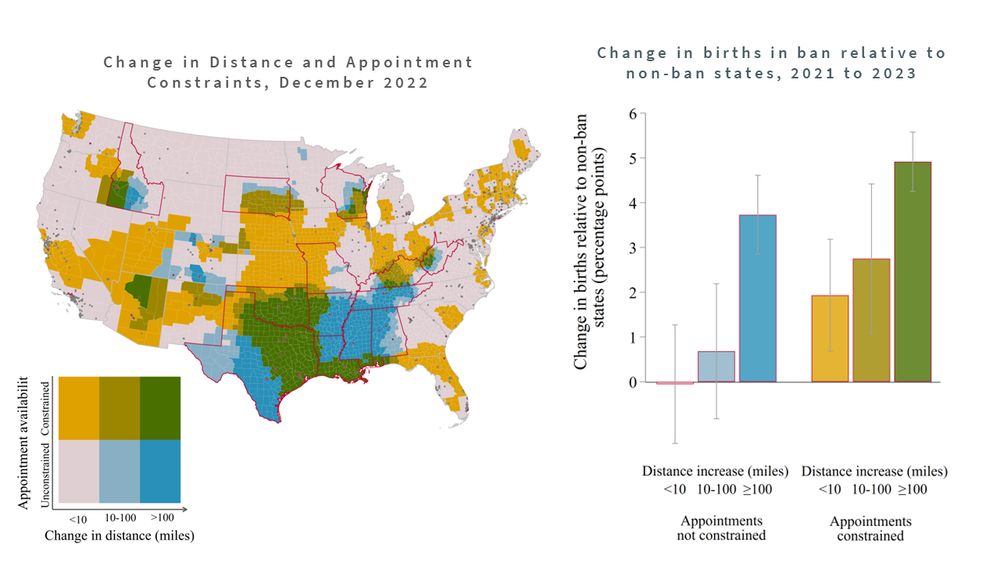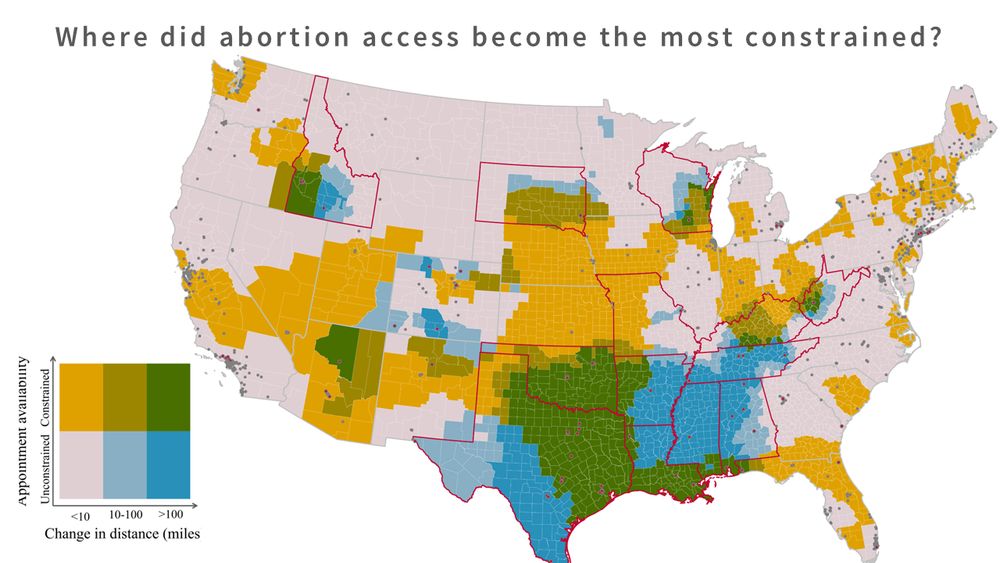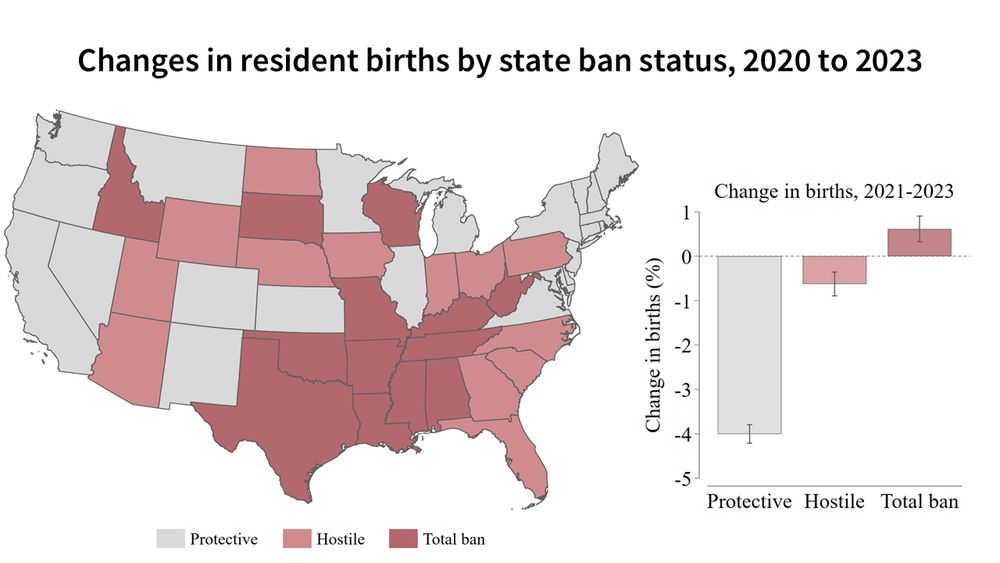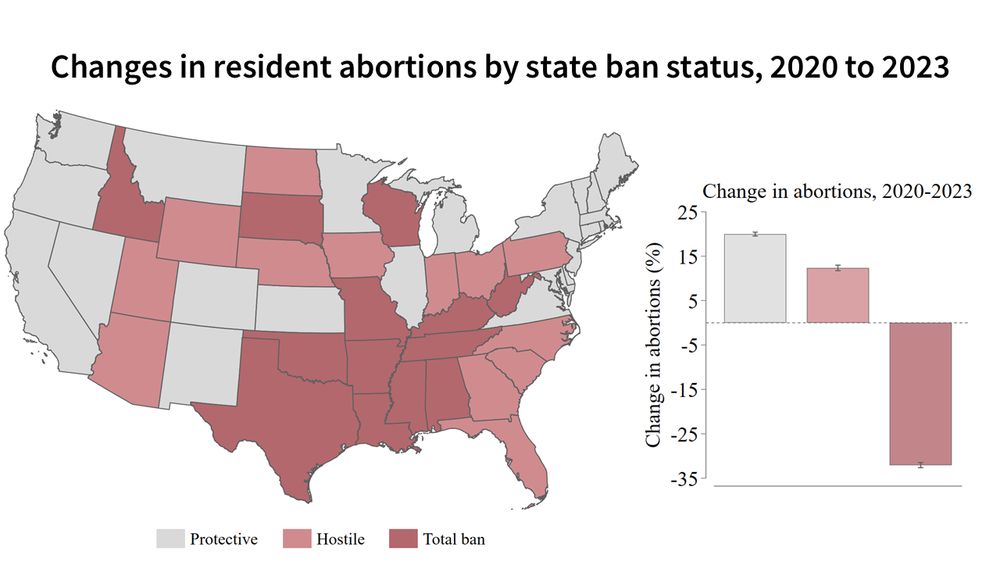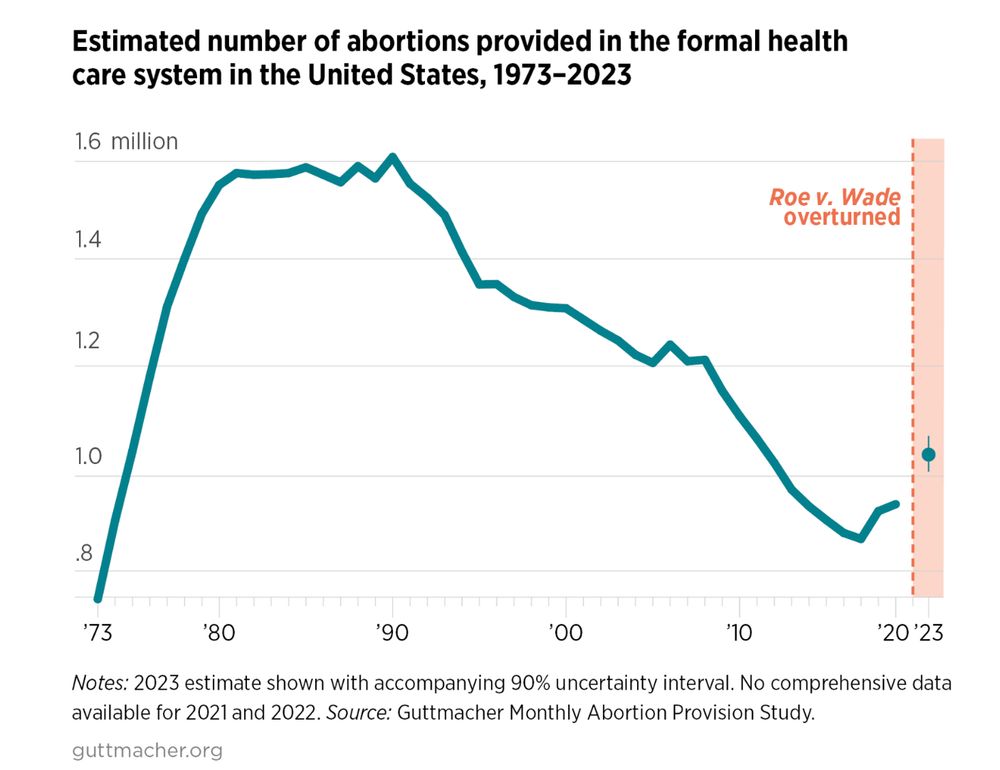
- Abortions ↓, births ↑
- Labor force participation ↓
- Debt burdens ↑
- Income inequality ↑
- Housing insecurity ↑
- Property crime ↑ (burglary, larceny-theft, motor vehicle theft)

- Abortions ↓, births ↑
- Labor force participation ↓
- Debt burdens ↑
- Income inequality ↑
- Housing insecurity ↑
- Property crime ↑ (burglary, larceny-theft, motor vehicle theft)
This lets us study how access shocks affect reproductive behavior, household economic well-being, and public safety.

This lets us study how access shocks affect reproductive behavior, household economic well-being, and public safety.


